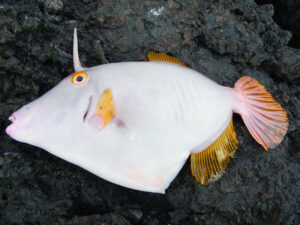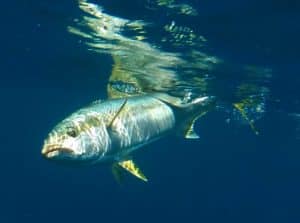
Do you have a photograph of a fish you can’t identify? If so, we’re up for the challenge, and would welcome the opportunity to share your photo and its ID with an international audience of enthusiasts. (Whether published or not, we will personally respond to every inquiry.) Email your jpgs, as large/hi-res as possible, to: fishfacts@sportfishingmag.com.
Steve Wozniak knows his fish, having caught and identified (often with the help of regional scientists) well over 2,000 species the world over. So when the angler, from Alamo, California, caught this robust specimen while fishing the Red Sea off southern Egypt, with guide Amin Abu Rehab, he recognized it as a sky emperor.
“This species exists only in the Red Sea,” he comments. But then he wonders, “What keeps these fish from extending their range beyond the Red Sea?” and adds, tongue in cheek, “Somali pirates?”
Good question, said Fish Facts, so we turned to our Indo-Pacific expert Ben Diggles, Ph.D., based in Australia, for more on this cool fish.
“The sky emperor (known scientifically as Lethrinus mahsena) does in fact occur outside the Red Sea,” Diggles says, “in the Western Indian Ocean mainly along the coast of eastern Africa, but also Mauritius, the Seychelles and as far east as western India and Sri Lanka. Like other emperors within the family Lethrinidae, sky emperor are relatively long-lived, having been aged up to 27 years. They’re also a relatively large fish, growing to 26 inches long (the IGFA all-tackle record stands at just under six pounds).”
Diggles notes that in their larval dispersal stage, sky emperor larvae drift around for a month or so before settling onto coral-reef substrates. This suggests “that sky emperor have the opportunity to disperse widely throughout the Indian Ocean during their lifespan.” However, prevailing currents tend to limit that dispersal, which may account for their remaining prevalent mostly in the Red Sea.








